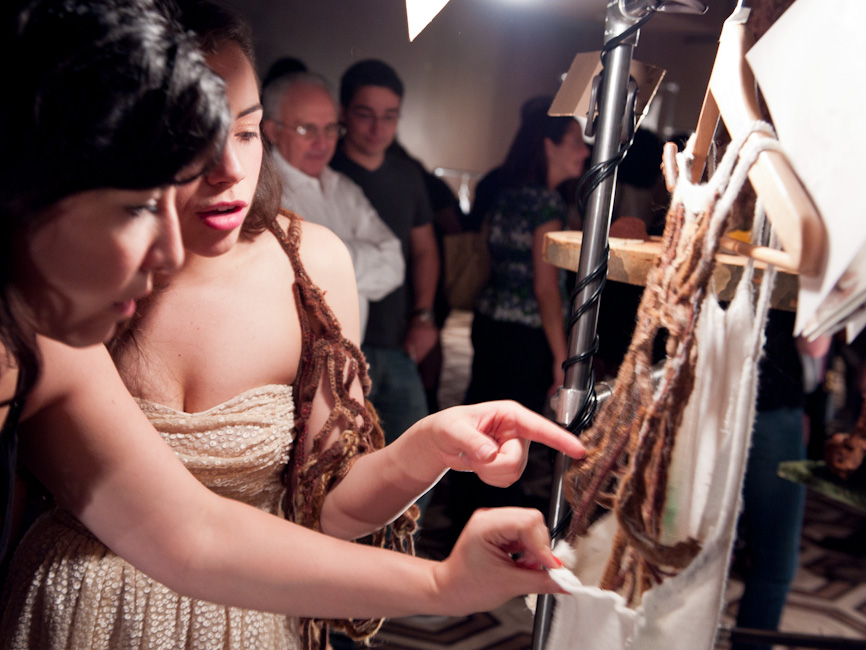
Adorning the body is an important aspect of African Egyptian cultures, from ancient to contemporary times. Body art; from scarification, body paint, headdresses to hairstyles, play a very important role in their lives and societies. It has influenced their art and culture in and the relation between them.
In South African Rock Art an Archaic Rock Painting of a Horned Female Figure in the Tassili N’Ajjer Region of Algeria a cow deity or female goddess is adorned with raffia and other body ornamentation. The cow, like women, is a source of milk and a nurturer. For the Ajjer peoples adorning the body with tattoos, beads, or body paint apparently contributed to the experience of transformation into the spirit they portrayed in their masquerades and rituals.
The cow deity/mother concept carries over to Egyptian Art, as we see the pre-dynastic Female Figure sculpture with raised arms that resemble horns. In Egyptian beliefs the woman, sometimes Isis or Osiris as mother of Horus, has immense sexual power, which is seen as a source of life, and an important symbol of rebirth and resurrection. At a grave at Thebes, Egypt we see how a female figure’s hair plays an important role as a symbol of female fertility and birth, and pubic hair is shown in a triangle and her well-groomed locks, made out of black mud beads are seen as erotic. Women’s role in society is motherhood and to nurture; as mothers of the Pharaoh and as Queen, but they do not emphasize on the babies. Some rock paintings showed us how tattoos served as spiritual protection and not just for physical beauty, scarifications served to mark the different stages of life and were sometimes done in the abdominal area to protect women and their fertility.
Not only is hleeta used to mark people, but its significance has also influenced other cultures and Ga’anda art forms such as the engraved calabashes and the sculptures and vessels of the Dakarkari peoples.
In Nubian culture it was believed that the God Amun Ray impregnated the sister of the Pharaoh; this made them a matrilineal society and the Queen was a ruler. They were often depicted as large and heavy to represent how much strength and majesty they possessed. The wealthiest capital of the Kingdom of Kush was well known for their trade with other countries along the Nile and Queen Amanishakheto of Meroe was a good example. An ornament found in her tomb is believed to have been part of a headdress or a ring. It contained cowreshells that resembled female genitalia. Egyptian and African women wore them for protection and blessing. We also saw photography of a Nuer man with forehead scarifications that are still used in contemporary Sudan; for them it is a symbol of manhood and bravery.
In Nigeria, the Ga’anda women-especially the wives of the Chiefs- have to go through rituals of scarification during their engagement period. Sometimes at a very young age, they undergo this process to prove that they survived the pain and they are strong. The groom gives gifts to her parents when the first makings start to appear and, when she is ready to marry. Hleeta represents a sensual beauty, because of its dimensionality, but its patterns can be read by others. It indicates their social status, civilization and order. It is an idea of village vs. city/marshes vs. the pharaoh’s establishment of organization. It is supposed to protect them for reproduction and the bearing of children. In the MBIRGLENGNDA enshrined in a rock (3-10) hleeta also represents the sexual maturity and the achievements and responsibilities that come with adulthood. In West Africa , the Nok sculptures have very intricate hairstyles and no facial hair. In Bura culture the terracotta pots found on the graves were mostly women; their pottery showed marks on the body both for women and men.
In Nigeria, the Ga’anda women-especially the wives of the Chiefs- have to go through rituals of scarification during their engagement period. Sometimes at a very young age, they undergo this process to prove that they survived the pain and they are strong. The groom gives gifts to her parents when the first makings start to appear and, when she is ready to marry. Hleeta represents a sensual beauty, because of its dimensionality, but its patterns can be read by others. It indicates their social status, civilization and order. It is an idea of village vs. city/marshes vs. the pharaoh’s establishment of organization. It is supposed to protect them for reproduction and the bearing of children. In the MBIRGLENGNDA enshrined in a rock (3-10) hleeta also represents the sexual maturity and the achievements and responsibilities that come with adulthood. In West Africa , the Nok sculptures have very intricate hairstyles and no facial hair. In Bura culture the terracotta pots found on the graves were mostly women; their pottery showed marks on the body both for women and men.
Not only is hleeta used to mark people, but its significance has also influenced other cultures and Ga’anda art forms such as the engraved calabashes and the sculptures and vessels of the Dakarkari peoples.































































